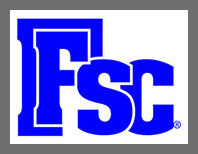By Stephanie Elsen

Professionals from the Farm Financial Standards Council are answering questions about ag financial matters (non-tax related). Here is a question that was recently submitted.
QUESTION
“My question pertains to death loss at a cattle feed yard. Cattle are purchased by lots and accounted for by lots. There is a typical amount of death loss, of course, in each lot. In general, no adjustment is made for normal death loss. In other words, the cost of those cattle and the feed they consumed up to death remains in the lot until sales occur. In a year where death losses are extraordinary (say 20% rather than the normal 2-7%), does an adjustment to inventory need to be made when there is still significant equity in each individual lot? When doing a lower of cost or market analysis (with the cost of the deads still included in the inventory cost), the market value still exceeds the cost. ”
ANSWER
The Guidelines don’t specifically speak to this issue, but Steve Severe the CFO of Padlock Ranch in Ranchester, WY and a member of the Farm Financial Standards Council Technical Committee, provides the following guidance.
"In my experience, I have always left the death loss with the lot until the lot is closed out (even if that closeout crosses over year-end). The decision to treat them on a lot basis conforms with GAAP. Where the cost for the lot, including the deads, is less than market value, that would give me comfort to leave it unadjusted.”
Farm Financial Standards Council
Click Here to Email Your Questions or email FFSC@redwingsoftware.com with a subject line of “Questions for the FFSC”. The FFSC will select questions to answer on this blog.
By Stephanie Elsen
Professionals from the Farm Financial Standards Council are answering questions about ag financial matters (non-tax related). Here is a question recently submitted by Travis F. Thanks for submitting your question, Travis!
QUESTION
“My question pertains to the reporting of current and non-current portions of non-current liability on a balance sheet. Is a loan with monthly payments treated differently? That is, for a monthly-payment loan, does one still include only the upcoming 12 principal payments for said loan under current portion of non-current liability?”
Thanks, Travis F.
ANSWER
The current portion of a non-current liability (a debt with a repayment term longer than one year) is the amount of principal that is due to be repaid within 12 months of the date of the balance sheet. If the balance sheet is dated January 1st, 2014 then the current portion would be the principal due in 2014 regardless of the frequency of the payment (monthly, quarterly, etc.).
Farm Financial Standards Council
Click Here to Email Your Questions or email FFSC@redwingsoftware.com with a subject line of “Questions for the FFSC”. The FFSC will select questions to answer on this blog.
By Stephanie Elsen
Calling all agricultural professionals! The mission of The Farm Financial Standards Council is to create and promote uniformity and integrity in financial reporting and analysis for agricultural producers. To help fulfill their mission, they would like to answer the questions agricultural producers have regarding accounting standards for farm businesses.
Click Here to Email Your Questions or email FFSC@redwingsoftware.com with a subject line of “Questions for the FFSC”. The FFSC will select questions to answer on this blog.
By Stephanie Elsen

The Farm Financial Standards Council (FFSC) has been working on developing recommendations for hedge transactions for agricultural operations. In January 2014, nearly 70 pages of additional content will be added to the Financial Guidelines for Agriculture. The content will provide content and examples of how to account for hedge (futures and options) transactions on financial statements for agricultural producers.
The additional content to be released contains information about two types of hedging: fair value hedges and cash flow hedges. Fair value hedges are when a producer stores grain that is valued on the balance sheet at fair market value and is readily available for sale. In this case the resulting hedging gains and losses are included in the revenue section of the income statement. Cash flow hedges occur when a producer hedges items not available for sale, including planned or growing crops or livestock. These items are valued at cost on the balance sheet, and the resulting hedging gains and losses may be excluded from the income statement and instead shown in other comprehensive income.
To learn more about the FFSC recommendations on accounting for hedging transactions, look for the new content in January of 2014 at www.ffsc.org
The FFSC was created to promote uniformity and integrity in financial reporting and analysis for farmers. Learn more about their mission and the tools they offer by visiting their Web site: www.ffsc.org
By Stephanie Elsen

The Farm Financial Standards Council or “FFSC” is an all-volunteer non-profit group consisting of individuals interested in the improvement of financial and managerial accounting for agricultural producers. The FFSC works to create uniformity in farm financial accounting analysis. Farmers can benefit from paying attention to the FFSC and The Guidelines.
Using The Financial Guidelines for Agriculture provides consistency to third parties such as lenders and consultants. If you understand and follow The Guidelines, your lenders and consultants will have a better understanding of your financial information. With a better understanding of your business, those third parties can help you improve your operation. While you may be using your farm accounting software application to track this information, setting it up correctly is also important, and that’s when you can turn to The FFSC Guidelines.
The FFSC Guidelines are detailed in one document, which is indexed by subject. While The Guidelines are quite lengthy, reading the entire document from cover to cover is not necessary. Rather, The Guidlines should be used as a resource when a specific question arises. For example, there may be a field in your accounting system for you to assign a value to breeding livestock. You may not be aware of how to assign this value, and this situation is a perfect example of when to turn to the FFSC Guidelines and look up the best way do that.
The FFSC was created to promote uniformity and integrity in financial reporting and analysis for farmers. Learn more about their mission and the tools they offer by visiting their Web site: www.ffsc.org.